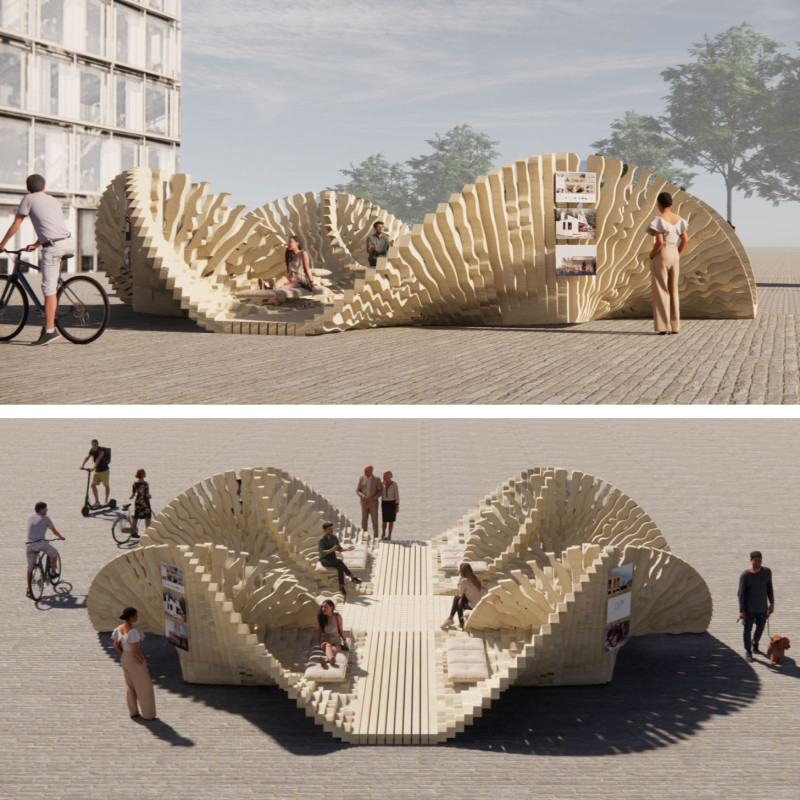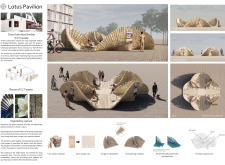5 key facts about this project
The Lotus Pavilion is an innovative space that utilizes cross-laminated timber (CLT) waste to showcase sustainable design in a practical setting. It serves as a multifunctional area where community gatherings and exhibitions occur. The design integrates the structure with its natural surroundings, emphasizing a connection with the environment while addressing broader sustainability issues.
Design Concept
The Pavilion’s structure features an organic form inspired by natural shapes. Each waste panel is cut with freeform lines, creating distinct, individual elements that contribute to the overall look and feel. This design approach underscores a commitment to sustainability by repurposing materials that would typically be discarded. The result is a building that celebrates the beauty of timber while adhering to a zero-waste philosophy.
Functional Aspects
A key element of the Pavilion is the arrangement of seating pockets strategically placed throughout the space. These seating areas encourage interaction among visitors and provide a welcoming atmosphere. The Pavilion is not only a place for exhibitions but also promotes social engagement. The outer edges are designed to display various content, enhancing the versatility of the space and allowing it to adapt to different community needs.
Technological Integration
To enhance the design, the project employs parametric tools, which help in creating the intricate intersections of its leaf-like components. This method ensures that the structure maintains its strength while minimizing waste. By applying these advanced design techniques, the Pavilion combines visual appeal with solid structural performance, demonstrating how technology can improve traditional building methods.
A remarkable aspect of the Pavilion is its ability to move to different locations, which allows it to function in various contexts without losing its identity. The blend of natural forms with innovative design methods leads to a structure that serves both a practical purpose and enriches the environments it inhabits.



















































